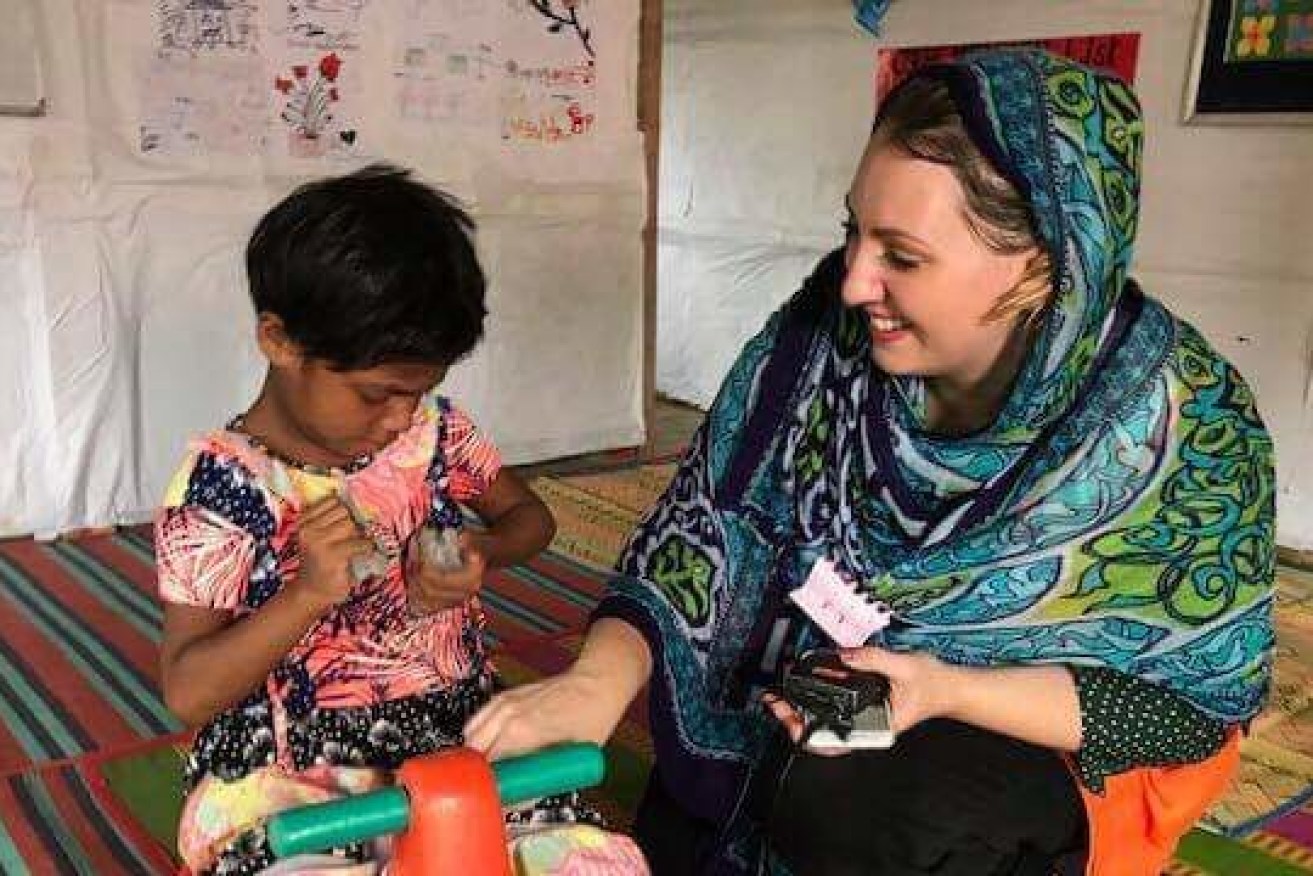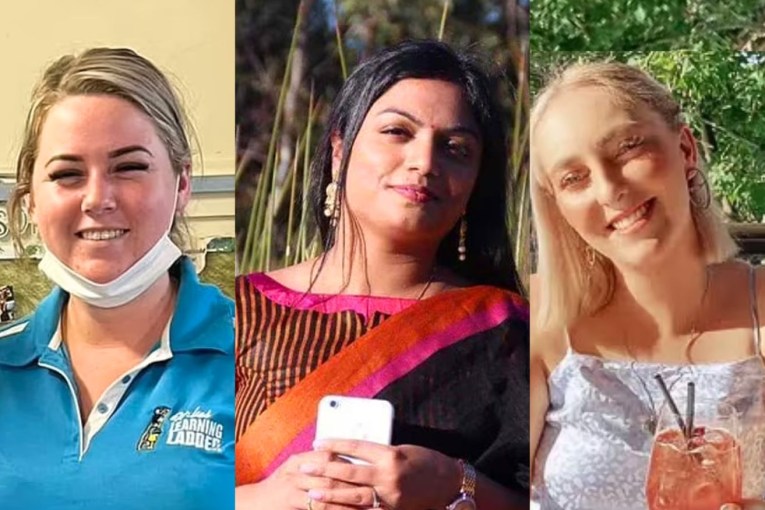Their hell on earth: COVID-19 is just one more torment for Rohingya refugees

Bridie McKenna Parry with young Rohingya refugee, Tasmin. Photo: World Vision
In a sewage-soaked laneway on the other side of the world, I met a little girl I’ll never forget.
Tasmin, 4, was the same age as my daughter, Scarlett, at the time.
She has big brown eyes, a bashful smile and cropped hair – an uncustomary style for girls in her Rohingya culture. But it helps prevent head lice in the world’s largest, most densely-populated refugee camp.
Head lice are the least of this child’s concerns.
Tasmin and her family of five live in a one-room bamboo-and-tarp shelter in a maze of 34 sub-camps that stretch as far as the eye can see. This tent city is incongruously plonked just an hour from Cox’s Bazar, the southern Bangladesh town that is the country’s most popular seaside holiday destination.
I met Tasmin last year during a work trip with World Vision to the Rohingya refugee camp, an overcrowded makeshift city of almost a million people.
It’s not dissimilar to the film Slumdog Millionaire – but worse. It’s World Refugee Day today, and I’m more worried about them than ever.
Tasmin, her parents and sister fled on foot from their home in Rakhine State, Myanmar, to Bangladesh in August 2017, following a military crackdown and extreme violence. They joined more than 700,000 fellow Muslim Rohingya escaping decades of gross human rights violations in Myanmar.
Mum Gul and dad Monir were forced to carry their children on the terrifying six-day journey during monsoon rains. It was an escape route only the young and strong survived.
Gul and Monir welled up as they spoke of the difficulty carrying their baby for nearly a week, but they were among the lucky ones.
It’s estimated that more than 9,000 Rohingya died in the violence or during the exodus.
They arrived safely in Bangladesh to find themselves in a new nightmare, where they have been stuck, stateless, for nearly three years.
Like many others, their hut is no bigger than an average Australian bathroom, separated by bamboo dividers, making privacy impossible.
Their meagre belongings are encrusted with dust and sweat. There are no pillows or mattresses to soften the concrete floor. Gul cooks on a propane-tank ring stove as there’s no electricity and few solar lights.
Even where there is lighting, women are afraid to go out at night even to visit the latrine. It’s rare to see an unaccompanied female.
I remember remarking: “Where are all the women?” Gender-based violence, including rape and assault, are major threats in the camp.

Bridie McKenna with her daughter, Scarlett. Picture: World Vision
Almost three years after arriving, Tasmin and her family remain.
They still lack the right to national identification in Myanmar.
Denied official refugee status in Bangladesh, they are unable to work or study. The Rohingya are citizens of nowhere, one of the largest groups of stateless people in the world.
And with the march of COVID-19, the camps are a ticking time bomb.
Overcrowded living conditions make social distancing almost impossible. More than 40,000 people per square kilometre coexist in the camps, compared to Sydney with its 407 people per square kilometre.
By mid-June, 38 cases were confirmed, with two deaths.
But the low numbers are not reassuring. The Rohingya avoid testing for fear of being separated from their families and moved into quarantine centres. With only 200 hospital beds and a handful of ventilators in the camp clinics, health workers worry as confirmed COVID-19 cases approach 100,000 across Bangladesh, a country of 165 million people.
World Vision and other agencies are working around the clock to stem the spread of COVID-19. Families are provided with soap and other hygiene supplies while training Rohingya imams to disseminate COVID-19 prevention information to their communities.
The Rohingya have many reasons to distrust authorities, but the people respect and heed their Muslim leaders.
As I await the arrival of a brother or sister for Scarlett, I wonder for the future of Tasmin, her sister, their new baby sibling and their parents.
Gul and I have the same dreams for our girls. Dreams to give them an education, to see them grow into good people. To be healthy and happy. But they dodge death daily. I just dodge other shoppers with a sniffle.
Over the past three years, living conditions have improved.
Funding from the Australian government and other donors have seen UN agencies and NGOs do their best to transform the camps from a vast mudhole into a liveable tent city.
Together, they have improved housing, constructed roads and bridges, installed thousands of freshwater pumps and latrines, erected hundreds of children’s learning centres and supplied food daily for almost a million people.
The Rohingya – a resilient, hardworking people – are grateful.
But at the same time they despise being dependant on relief aid. More than anything, they just want to go home.
But until conditions in Myanmar make their return safe, and until their demands for citizenship, education and other basic rights are met, the Rohingya stare into an unknown future.
On World Refugee Day we must not forget them. For now, COVID-19 poses a new threat and we must do everything we can to help.
- Refugee names have been changed to protect their identity.
Bridie McKenna Parry is a content manager at World Vision Australia








